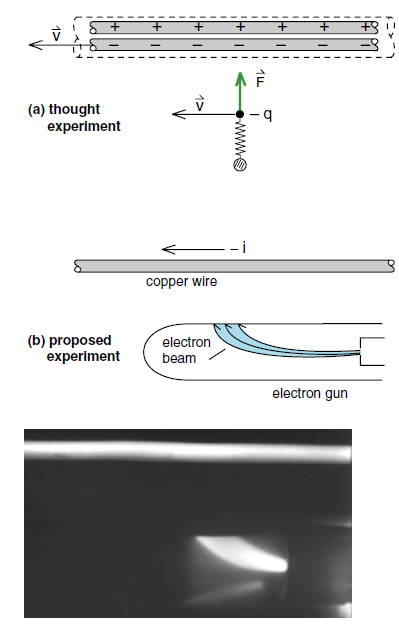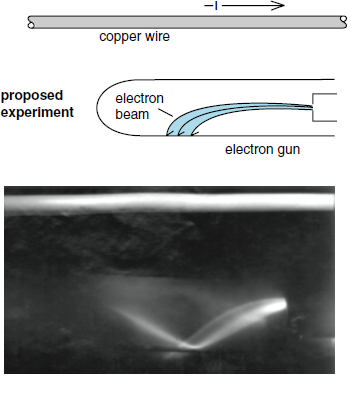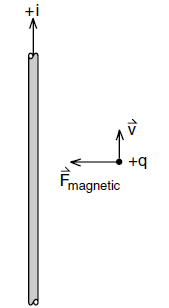


 الفيزياء الكلاسيكية
الفيزياء الكلاسيكية
 الكهربائية والمغناطيسية
الكهربائية والمغناطيسية
 علم البصريات
علم البصريات
 الفيزياء الحديثة
الفيزياء الحديثة
 النظرية النسبية
النظرية النسبية
 الفيزياء النووية
الفيزياء النووية
 فيزياء الحالة الصلبة
فيزياء الحالة الصلبة
 الليزر
الليزر
 علم الفلك
علم الفلك
 المجموعة الشمسية
المجموعة الشمسية
 الطاقة البديلة
الطاقة البديلة
 الفيزياء والعلوم الأخرى
الفيزياء والعلوم الأخرى
 مواضيع عامة في الفيزياء
مواضيع عامة في الفيزياء|
Read More
Date: 16-2-2021
Date: 10-2-2021
Date: 7-10-2020
|
Parallel Currents Attract
While we are in the business of discussing mnemonic rules, there is another that makes it easy to remember whether a charge moving parallel to a current is attracted or repelled. In Figure (1) we had a beam of negative electrons moving parallel to a negative current -i, and the electrons were attracted to the current. In Figure (2) the current was reversed and the electrons were repelled. One can work out a thought experiment similar to the ones we have done in this chapter to show that a positive charge moving parallel to a positive current as shown in Figure (3) is attracted.

Figure 1c: For an experimental test of the results of the thought experiment, we replace the moving negative charge with a beam of electrons in an electron gun. The electrons are attracted to the wire as predicted.
The simple, yet general rule is that parallel currents attract, opposite currents repel. A positive charge moving in the direction of a positive current, or a negative charge moving along with a negative current are attracting parallel currents. When we have negative charges moving opposite to a negative current as in Figure (2) we have an example of opposite currents that repel.

Figure 2: If we reverse the direction of the current in the wire, the electrons in the beam are repelled.

Figure 3: A positive charge, moving parallel to a positive current, is attracted by the current. Thinking of the moving positive charge as a positive upward directed current, we have the rule that parallel currents attract, opposite currents repel.



|
|
|
|
دراسة يابانية لتقليل مخاطر أمراض المواليد منخفضي الوزن
|
|
|
|
|
|
|
اكتشاف أكبر مرجان في العالم قبالة سواحل جزر سليمان
|
|
|
|
|
|
|
المجمع العلمي ينظّم ندوة حوارية حول مفهوم العولمة الرقمية في بابل
|
|
|